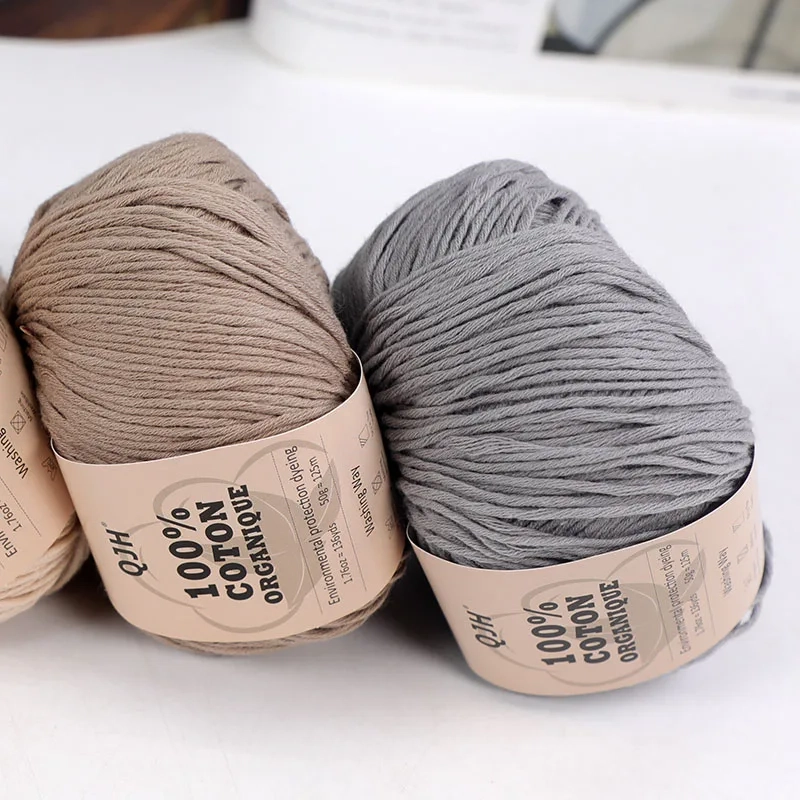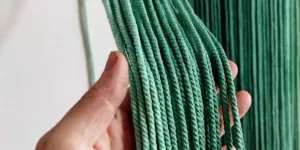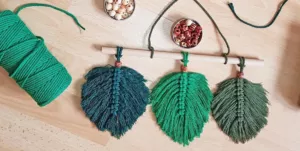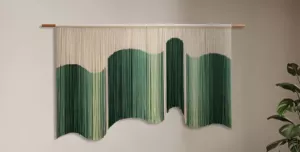Macrame is the art of knotting cords into intricate patterns to create decorative items such as wall hangings, plant hangers, and various home decor pieces. While many materials can be used for macrame, cotton yarn is one of the most popular choices among crafters. Known for its softness, durability, and versatility, cotton yarn offers numerous benefits for macrame projects. This blog post will explore the advantages and potential drawbacks of using cotton yarn for macrame, compare it with other common macrame materials, and provide tips for getting the best results from your cotton yarn macrame projects. By the end, you’ll have a thorough understanding of whether cotton yarn is the right choice for your next macrame endeavor.
Characteristics of Cotton Yarn
Softness and Flexibility
One of the primary reasons crafters favor cotton yarn for macrame is its softness and flexibility. Cotton yarn feels gentle on the hands, making it comfortable to work with, especially for long periods. This is particularly important when creating detailed and intricate knot patterns, as rougher materials can cause discomfort or even minor injuries.
Strength and Durability
Cotton yarn is relatively strong and durable, which is crucial for macrame projects that need to support weight or withstand frequent handling. For example, cotton yarn is an excellent choice for plant hangers, as it can bear the weight of a potted plant without easily breaking or stretching out of shape.
Variety and Availability
Cotton yarn is widely available and comes in various thicknesses, colors, and blends, allowing for a high degree of customization. You can find cotton yarn in nearly every craft store, as well as online, ensuring that you have plenty of options to choose from. Whether you’re looking for a specific color to match your home decor or a particular thickness for a detailed project, you’re likely to find what you need in cotton yarn.
Ease of Maintenance
Unlike some other macrame materials, cotton yarn is generally easy to clean and maintain. Most cotton yarns are machine washable, making them ideal for items that might get dirty over time, such as kitchen decor or items placed in high-traffic areas.
Advantages of Using Cotton Yarn for Macrame
Versatility
One of the most notable advantages of cotton yarn is its versatility. It can be used for a wide range of macrame projects, from wall hangings and plant hangers to more delicate items like jewelry and accessories. Its softness makes it ideal for projects meant to come into direct contact with the skin, while its strength ensures that it can support heavier items.
Eco-Friendly Option
Cotton is a natural fiber, making it a more eco-friendly choice compared to synthetic materials like polyester or nylon. By choosing cotton yarn for your macrame projects, you’re making a more sustainable choice that has a lower environmental impact.
Comfort
As mentioned earlier, the softness of cotton yarn makes it gentle on your hands during the knotting process, reducing the chances of discomfort or irritation. This is especially important for beginners who might not yet be accustomed to handling rougher materials.
Customization
Cotton yarn’s availability in a vast array of colors and thicknesses allows for significant customization. You can easily find cotton yarns that fit your specific project requirements, whether you need a thick, sturdy cord for a plant hanger or a finer thread for detailed beadwork in a jewelry piece.
Dyeability
Cotton yarn takes dye very well, allowing you to customize your macrame projects with unique color schemes and patterns. This is particularly beneficial if you’re creating macrame pieces to match specific room decor or if you’re interested in experimenting with color gradients and ombre effects.
Disadvantages of Using Cotton Yarn for Macrame
Cost
While cotton yarn is generally affordable, high-quality cotton yarns can be more expensive than other materials like jute or synthetic options. If you’re planning a large-scale project, the cost of using premium cotton yarn can add up, making it a less budget-friendly option.
Stretching
Cotton yarn tends to stretch over time, especially when bearing weight. This could be a disadvantage in projects where maintaining the original shape is crucial, such as in certain types of wall hangings or functional items like plant hangers.
Maintenance
Though cotton is easy to clean, it is more susceptible to getting dirty, especially if used in high-traffic areas or outdoors. Cotton yarn can easily absorb stains and might require regular washing to maintain its appearance.
Comparing Cotton Yarn with Other Macrame Materials
Jute
- Pros: Jute is highly durable and has a rustic, earthy appearance. It is excellent for heavy-duty projects and outdoor use.
- Cons: It is rough to the touch and can be challenging to work with, particularly for intricate patterns. Jute is also less flexible than cotton yarn.
Hemp
- Pros: Hemp is another strong and eco-friendly option. It is durable and has a natural look that suits many macrame projects.
- Cons: Hemp can be stiff and challenging to knot, and it may not offer the same level of softness and comfort as cotton yarn.
Nylon/Polyester
- Pros: Synthetic materials like nylon and polyester are incredibly durable and resistant to weather elements, making them suitable for outdoor projects.
- Cons: They lack the natural feel of cotton and can be less eco-friendly. Additionally, they may not have the same soft and comfortable texture as cotton yarn.
Ideal Macrame Projects Using Cotton Yarn
Wall Hangings
Cotton yarn is perfect for creating macrame wall hangings due to its softness and variety. It allows for intricate patterns and detailed designs, making it easy to create a stunning piece of home decor.
Plant Hangers
Cotton yarn’s strength and durability make it an excellent choice for macrame plant hangers. You can trust that your cotton yarn plant hanger will support the weight of your potted plants while adding a stylish touch to your home.
Jewelry and Accessories
For wearable items that come into direct contact with the skin, cotton yarn’s softness is ideal. You can create beautiful necklaces, bracelets, and earrings that are both stylish and comfortable to wear.
Home Decor
Cotton yarn is suitable for creating various home decor items like table runners, coasters, and curtains. Its easy maintenance and wide range of colors make it easy to match these items with your existing decor.
Fashion Items
You can use cotton yarn for creating macrame fashion items such as belts, bags, and even clothing. The flexibility and softness of cotton yarn make it comfortable for wearing while still offering durability.

3 Pcs/Lot 100% Organic Cotton Yarn Best Yarn for Crochet
Dive into the world of sustainable crafting with our 100% Organic Cotton Yarn, designed specifically for those who value environmental friendliness as much as they cherish quality in their handcrafted projects.
Tips for Working with Cotton Yarn in Macrame
Choose the Right Knotting Techniques
Certain knotting techniques work better with cotton yarn than others. For example, simpler knots like the square knot or lark’s head knot will highlight the softness and flexibility of cotton yarn. Complex patterns can also be achieved with practice and patience.
Prepare Your Yarn
Before starting your project, it’s essential to prepare your cotton yarn to avoid issues like tangling. Measure and cut the required lengths, and consider using a yarn winder to keep everything organized.
Test for Stretch
To counter the potential for stretching, consider pre-stretching your cotton yarn. You can do this by pulling on the yarn gently before you begin knotting. This will help you gauge the yarn’s stretchiness and make necessary adjustments.
Maintain Consistent Tension
One of the challenges of working with cotton yarn is maintaining consistent tension throughout your project. Try to use even pressure when creating your knots to ensure a uniform appearance.
Care and Cleaning
For long-lasting macrame items, follow proper care instructions. Most cotton yarn projects can be machine washed on a gentle cycle, but always check the yarn label for specific care guidelines. Air drying is usually the best method to prevent additional stretching.
Conclusion
Cotton yarn is an excellent choice for macrame, offering numerous advantages such as softness, versatility, and ease of maintenance. Although it may not be as budget-friendly or durable as some other options, the benefits generally outweigh the drawbacks for many crafters. By understanding the characteristics and best uses of cotton yarn, you can make informed decisions and create beautiful, lasting macrame pieces that you can enjoy for years to come.








